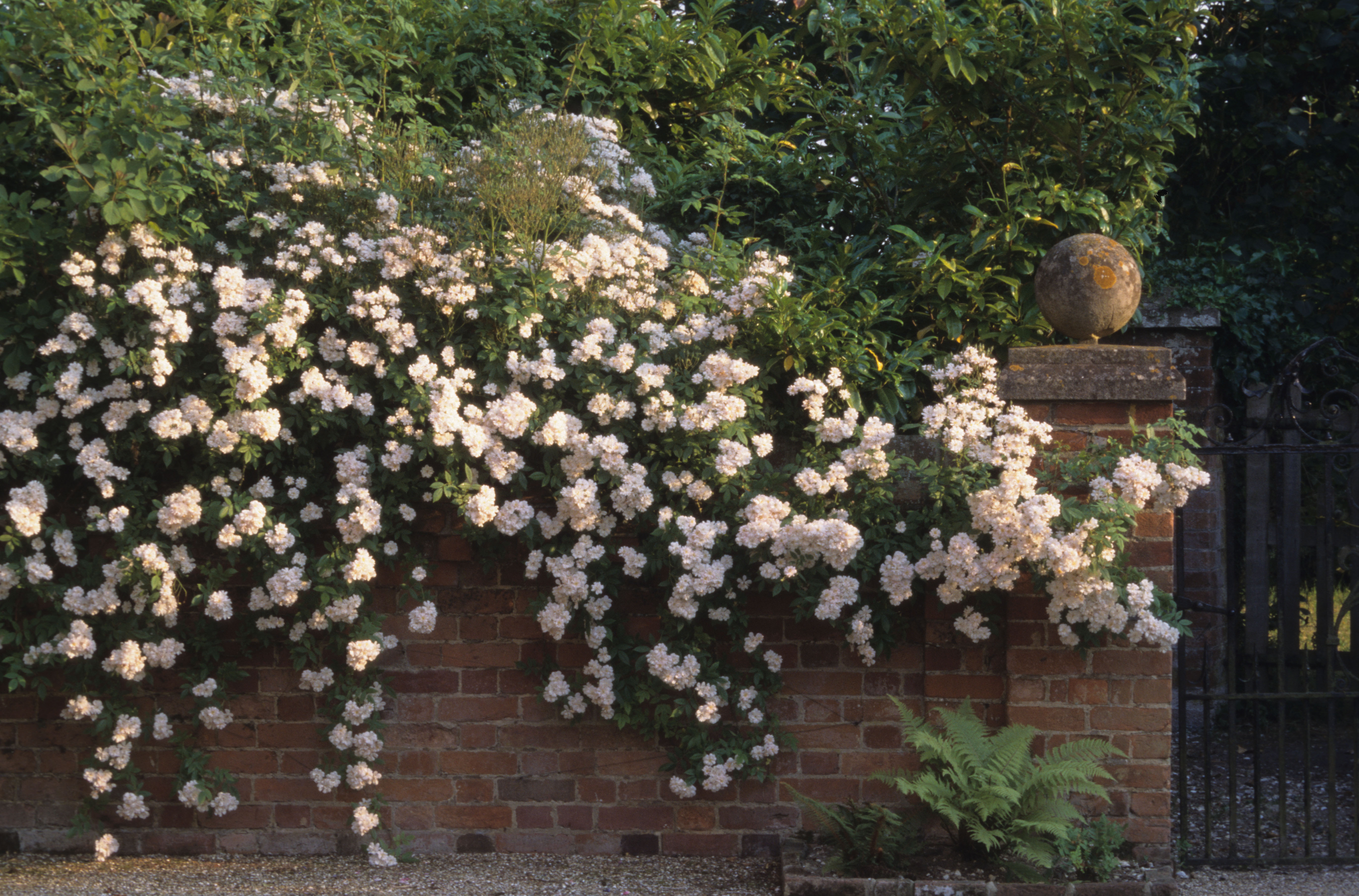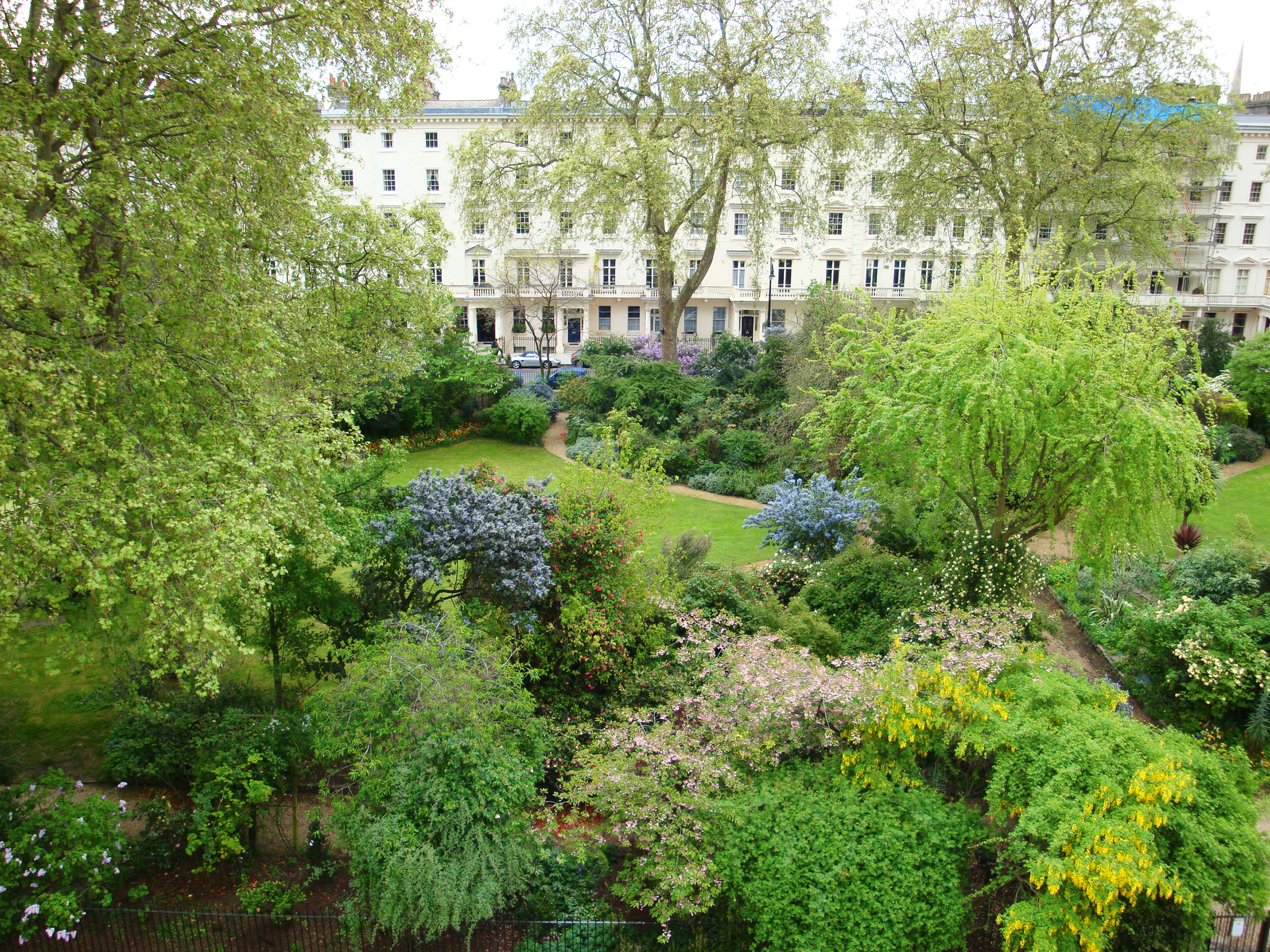The rose that flowers 'from October to summer', and the man who used it to light up a beautiful corner of London
George Plumptre pays tribute to the late Roger Phillips, whose seminal book on trees has been updated almost 50 years after its initial publication.

It is a rare privilege for a gardening writer to have a new edition of a book published posthumously. Such luminaries include Gertrude Jekyll and Russell Page… and now Roger Phillips. His bestseller, Trees, has just had a revised edition released by Macmillan, which published the ground-breaking original in 1978.
The book covers trees of North America, Europe, the UK and Ireland and has been expanded to cover 650 species from the original 500. As well as its comprehensiveness, it has all the other instantly recognisable hallmarks of Phillips’s particular style that made this — and all the books he produced over a lifetime of writing about plants — so compelling. He had a way of combining simplicity of description with botanical authenticity, so a book such as Trees becomes much more than an illustrated list.
Because he was as good a photographer as he was a writer, the images — painstakingly detailed — contribute as much as the text, in particular in the first section, the Leaf Key Index, which Phillips pioneered. The sheer quantity of close detail is revealing of both the individual characteristics of different trees and the subtle variances within a family or genus.
Trees, together with Phillips’s other books, forms a lasting legacy to this most engaging, erudite gardener and botanist who died in 2021. There is another living legacy to his talents, however, in the garden of Eccleston Square, London, which was his home for more than 40 years and on which I am also fortunate enough to live. During his lifetime, he transformed the 3½ acres from a dull city space into a garden teeming with interest. Taking advantage of the central London microclimate and the canopy of magnificent London planes, Platanus x hispanica, he introduced a kaleidoscope of often exotic or rare plants, of all shapes and sizes, from trees to small bulbs and perennials.

Roger Phillips transformed the 3½ acres of Eccleston Square 'from a dull city space into a garden teeming with interest'.
There are a number of extensive collections, from ceanothus to camellias (at least one in flower every month of the year) and tree peonies (many of which produce flowers the size of dinner plates). There is also a good selection of the trees featured in Phillips’s book, but, in the Eccleston Square setting, many have become most distinctive as hosts for a collection of climbing and rambling roses he planted, many of which have achieved prodigious size.
Some are old favourites, such as an enormous plant of Rosa ‘The Garland’, which has formed a great canopy over a sturdy ironwood, Parrotia persica. Others are less well known, such as ‘Cooper’s Burmese’ (or R. cooperi), which literally smothers a red maple, Acer rubrum, with its large pure-white single flowers. Arguably the real treasures are the tea and China roses, not least because they flower for months on end. The selection includes R. ‘Alister Stella Gray’ and a rose I had never heard of before, which is also my favourite because of its back story.
Rosa ‘Général Schablikine’ was bred in 1878 by the famous French rose breeder Gilbert Nabonnand. He named it after a Russian general and hero of the Crimean War who became a neighbour when he retired to Provence. One expert wrote of this rose: ‘If a law was passed that one man should cultivate but one variety of rose, I should without hesitation choose ‘Général Schablikine’.’ He goes on to say that it flowers ‘continuously from October to summer’, to which I can attest, as I photographed it flowering in Eccleston Square on Christmas Day 2024.
Exquisite houses, the beauty of Nature, and how to get the most from your life, straight to your inbox.
As is his book Trees, the Eccleston Square garden is testament to Phillips’s encyclopaedic knowledge of plants built up over a lifetime of exploring and writing: he could have just as easily put together a companion volume on trees originating from other parts of the world, from China to Australasia (a particular favourite) and South America. I’ll finish with a tree from the latter continent that is — probably — the rarest in the Eccleston Square garden. Lots of people in the UK grow Crinodendron hookerianum, with its distinctive bright red lantern flowers, but very few people grow its equally distinguished relative, C. patagua, with evergreen foliage that is scattered in midsummer with small, gorgeously delicate creamy-white lily-like flowers. Its healthy state in the heart of London is a worthy tribute to Phillips’s inspiring career as gardener and author.
George Plumptre is chief executive of the National Garden Scheme, for which the Eccleston Square garden opens annually in May (www.ngs.org.uk). 'Trees' is out now (Macmillan, £35)
This feature originally appeared in the July 23, 2025, issue of Country Life. Click here for more information on how to subscribe